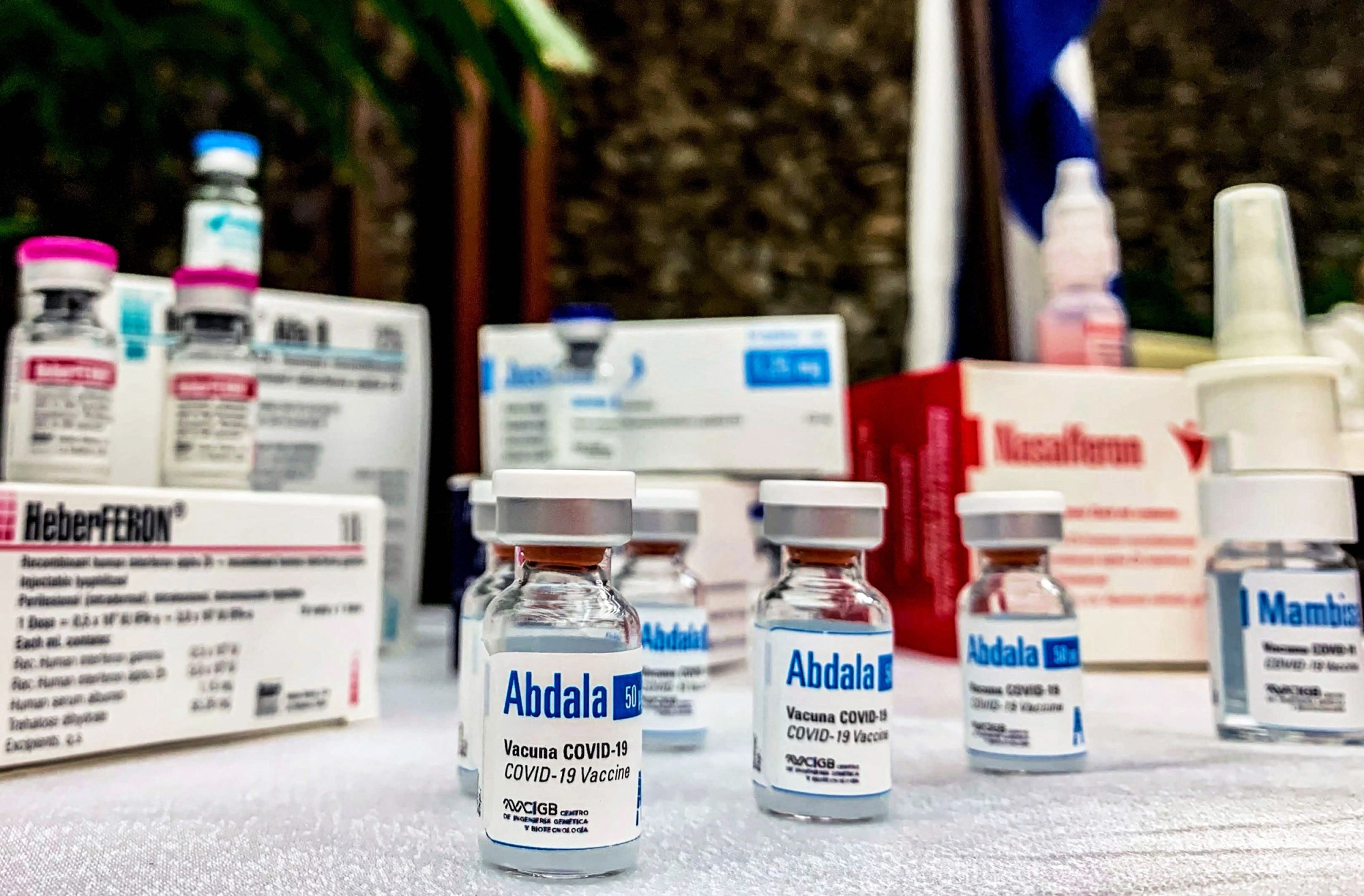By Carlos Ricardo Márquez, In Defence of Marxism, March 25, 2021
Today is the birthday of Julio Antonio Mella: a Cuban revolutionary and founder of the Cuban Communist Party, who was assassinated in 1929. We celebrate the legacy of this outstanding young Marxist, who embodied the best traditions of the communist movement, and gave his life in service of the working-class of Latin America and the whole world. The following text was first presented at the first International Seminar on the Life and Ideas of Leon Trotsky in Havana, Cuba, in May 2019.
Click here for the Spanish original.
Julio Antonio Mella once wrote, “Through victory or by serving as a trench for others: even in death we can be of service.” And he remains so to this day. Mella was an admirer of Leon Trotsky whom he described as “the dynamo of the revolution.” Mella came into contact with the International Left Opposition and he clashed with the methods and ideas of reformism and Stalinism. He liked to say things as they are. We must follow his example. Mella dedicated his life to the revolution – and he died for it. In so doing he came into conflict with the bureaucrats and opportunists who – despite radical phraseology – attempted to put a brake on the revolution; who conciliated and succumbed to the big bourgeoisie.
It seems incredible to think that Julio Antonio lived to be 27 years old, and yet in that time he became a central figure of the communist movement in Cuba, Mexico, and Latin America. Youth is the driving force of the proletarian revolution. Mella, like the youth of the Russian Bolshevik Party, was one of those tireless young people who broke with the established order and adopted a clear, revolutionary, proletarian perspective. Without people like him, there can be no revolution. But such impulse is not enough. It is also necessary to build the solid forces that will transform society: the revolutionary party.
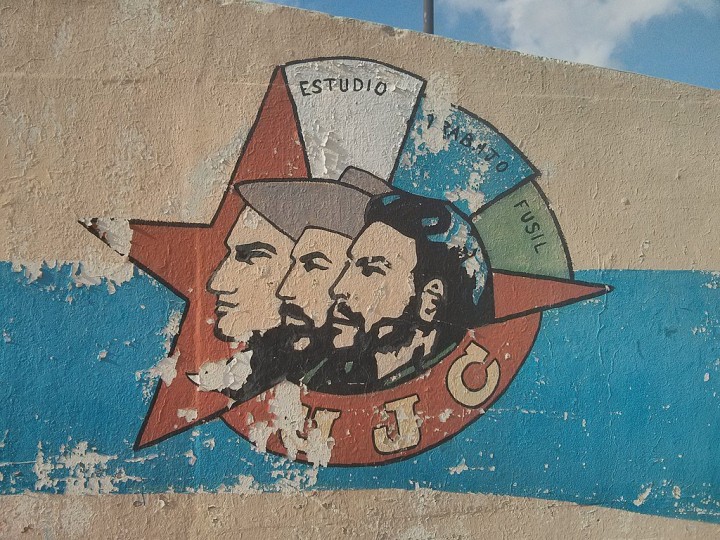 Julio Antonio Mella (left in the mural above) lived to just 27 years old, and yet in that time he became a central figure of the communist movement in Cuba, Mexico, and Latin America / Image: Pierre Marshall
Julio Antonio Mella (left in the mural above) lived to just 27 years old, and yet in that time he became a central figure of the communist movement in Cuba, Mexico, and Latin America / Image: Pierre Marshall
The impact of 1917
The seizure of power by the Russian workers shook the planet, opening the floodgates of class struggle at the international level. In Cuba, there was already an incipient socialist tradition predating 1917. Cuban emigrants since the middle of the 19th century had come into contact with socialist ideas. In 1918 there existed communist and anarchist groups that sympathized with the Russian Revolution, and the first attempts were made to build a communist party, a task that did not then come to fruition.
The winds of change came to Cuba initially through the movement of the university students who confronted the Machado dictatorship, just two years after the triumph of the Russian Revolution. Julio Antonio, coming from the petty bourgeoisie, became a leading participant in the struggle and entered into contact with the labor leaders, such as the anarcho-syndicalist Alfredo López who would have an enormous influence on him.
Mella began to understand the need to unite the student struggle with the proletarian struggle. In the course of the student struggle, he would evolve from a reformist position to a revolutionary one. We can see this in the articles he wrote for the university magazine, Alma Mater, and its successor, Juventud. In the latter, he began to defend the need for social revolution.
In February 1924, on the death of Lenin, there appeared an article by his pen, “Lenine Coronado”, in which we can read his first explicit and favorable reference to Trotsky. This is hardly surprising. At that time these two characters were unquestionably linked as the key leaders of the 1917 revolution and of the Bolshevik Party. The triumph of the Russian Revolution cannot be understood without the role of these two men. The Bolshevik party was known internationally as the party of Lenin and Trotsky.
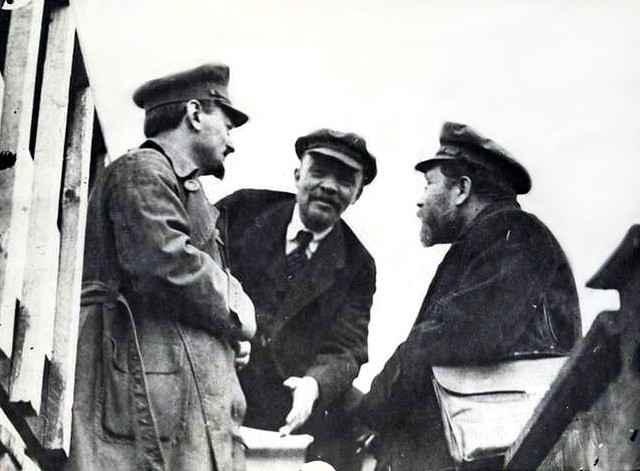 Julio Antonio recognised Lenin and Trotsky as the unquestioned leaders of the Russian Revolution
Julio Antonio recognised Lenin and Trotsky as the unquestioned leaders of the Russian Revolution
Lenin and Trotsky, although they always coincided on fundamental points, had some differences before the revolution that kept them apart. In practice, these differences would be erased. Geographically removed at two distant points, without contact between them, they nevertheless drew the same conclusions about the tasks of the Russian Revolution. In 1917, there was no longer any barrier that might prevent their full unification.
Lenin said of Trotsky that there was no better Bolshevik from that moment on, with the two remaining close comrades-in-arms from then on. In 1923, when the bureaucracy began its rise, Lenin established an alliance with Trotsky to fight it. What is interesting is that Mella not only spoke favorably about Trotsky in 1924, but also in the period when Trotsky was under direct attack, and even when his followers had been expelled from the Communist Party.
From Leninism to Stalinism
In August 1925 the Cuban Communist Party (PCC) was founded in a clandestine meeting with thirteen delegates present. The main figures present were Carlos Baliño (a historical fighter since the independence period) and Julio Antonio Mella. In the 1920s a generation of young revolutionaries had emerged, with the figure of Julio Antonio Mella as its initiator and its center.
The conversion of Mella to communism took place in the early years of the transition from Bolshevism to Stalinization. This affected not only the Communist Party of Russia and the Russian state but the whole International. Julio Antonio was by no means impartial, and we can say with certainty that he consciously did not take Stalin's side in this struggle. For example, while Mella made several favorable references to Lenin and Trotsky, the name of Stalin never appears in his articles.
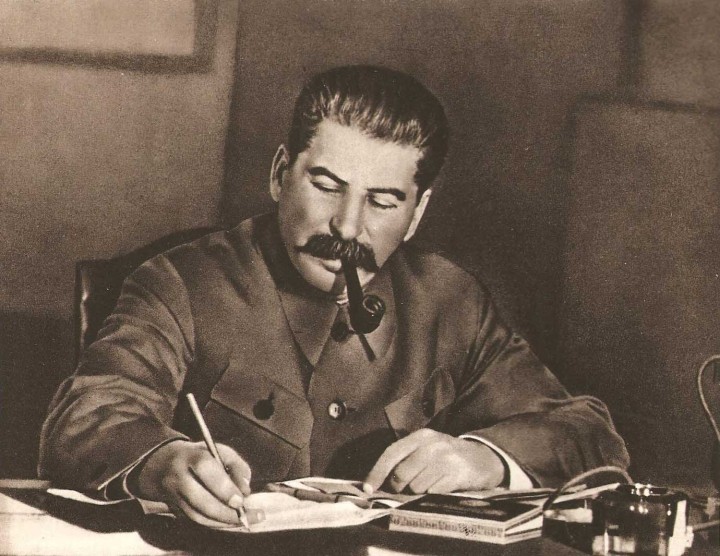 Mella made many positive references to Lenin and Trotsky but the name of Stalin does not appear in his writings
Mella made many positive references to Lenin and Trotsky but the name of Stalin does not appear in his writings
The October Revolution established the most democratic regime in history. Workers’ democracy meant the control of the soviets and the workers over the state and the economy. A tremendous degree of artistic freedom was given, which expressed itself in the emergence of various avant-guard movements; the trade unions enjoyed independence from the state, so that, as Lenin himself said, the workers could defend themselves from the excesses of the workers' government itself; the Bolshevik Party continued to be the space of open debate of revolutionary ideas, and the emergence of political currents and groupings was normal. In the midst of the most difficult conditions of the struggle, in the midst of the harassment and brutal attacks of the imperialists, as was the civil war, the party continued to hold its congresses annually. The Communist International followed the same tradition. Workers' democracy, far from opening the door to counterrevolution, drew the revolutionaries together.
Under the leadership of Lenin and Trotsky, all privilege was fought against. Debates were conducted politically, with participants depending on their moral authority and the strength of the arguments of the leadership. With the rise of the gray bureaucracy, dialectics was replaced by dogmatism. The debate of ideas was crushed by the apparatus. Mella's revolutionary spirit could not deal with this caricature that wanted to call itself ‘Marxist’. In ancient Rome, Christianity was co-opted by the ruling caste. It became a religion of the ruling class while continuing to speak like a religion of the poor. The Stalinist bureaucracy likewise spoke in favor of the October revolution while negating it in practice.
Expelled from the Communist Party
Mella was drawn to Marxism, attracted by the legacy of October. He was inspired by the ideas and practice of Lenin and Trotsky, whom he had read. At one point he became the central figure in the struggle against Machado in Cuba, who responded by attacking and imprisoning him.
Mella is the link in the history of the Cuban revolutionary struggle that connects it to the scientific ideas of revolutionary Marxism. Marxism is not a movement born from nothing. It is inspired by and linked to past revolutionary movements, beginning with the utopian socialists and developing beyond them. In the case of Mella, he drew inspiration from Cuba’s own revolutionary tradition, and his text about José Martí – which he wanted to turn into a book – is well known. Cuba was a country that had never been free and Mella understood the revolutionary potential of the national liberation struggle.
The young Cuban Communist Party, partly because of its youth, its weakness, and the repression it was subjected to by Machado – but also in part because of the political weakness of its leadership – entered into a bitter conflict with Mella. It went so far as to conduct an internal trial against him, expelling him from the organization.
That leadership of the PCC wasn’t capable of rising to the historical tasks. It was more concerned about the hunger strike Mella conducted whilst he was imprisoned than a consistent campaign for his liberation. Instead of engaging in a clear debate on tactics, they accused Mella of going on a hunger strike against his comrades, and of being individualistic and non-proletarian.
When Mella was released from prison – sick, persecuted and in danger of assassination – the harsh criticisms of the PCC did not abate. Rather than providing correct and clear answers in the face of attacks, they simply wanted control. Political weakness leads to the solution of problems not through debate but through the apparatus. This was Mella's first major clash with this kind of bureaucratic method.
His words, upon his release from prison, are in part a criticism of the leadership of the PCC, reaffirming that he had full faith in his ideals. While calling for the freedom of the rest of his imprisoned comrades, he points out that, “The Cuban people have shown that they know how to live the present historical moment of Humanity.” His spirit ran contrary to the narrow-mindedness of the Cuban communist leaders of that time.
When Mella went into exile in Mexico in 1926, after being released from jail, he joined the Communist Party of that country. The Communist International had to intervene for the PCC to recognize its mistake and to formally readmit him into the organization.
Mella did not enter exile defeated, but was an active militant. Not for a moment, while integrating himself into the class struggle in Mexico, did he set aside the revolutionary struggle in Cuba. He was a defender of the Leninist united front; he promoted groups in support of Sandino's struggle in Nicaragua; he supported the liberation of Sacco and Vanzetti (for which he again went to jail), and he was part of the leadership of the All-America Anti-Imperialist League.
Brussels and the USSR
In our opinion, the trips he made to Brussels and the USSR were a turning point in Julio Antonio’s political development. In the debates of the anti-imperialist meeting there is a definitive break with the opportunism of Haya de la Torre and the APRA (they had already engaged in a polemic in Mexico). In essence, they had a policy of imperialist subordination. Again he came into confrontation with the methods of the apparatus.
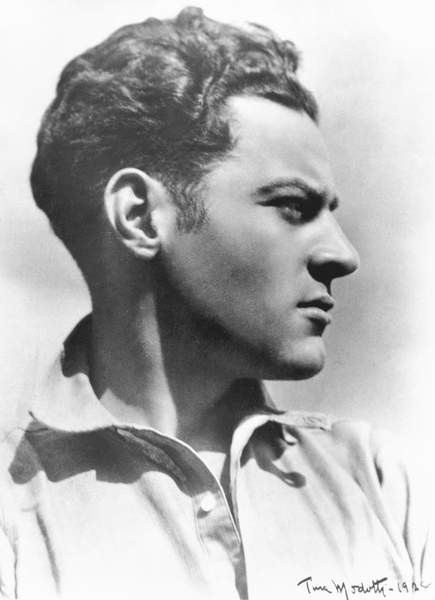 Julio Antonio Mella's visit to Brussels and Moscow were a key turning point in his political evolution / Image: Tina Modotti
Julio Antonio Mella's visit to Brussels and Moscow were a key turning point in his political evolution / Image: Tina Modotti
Mella's political positions gained a strong echo at the Anti-imperialist Congress of Brussels; as did his position on trade union tactics when he visited the USSR. A permanent representative of Latin America for the Red Trade Union International was due to be elected, and Mella was a natural candidate for the position. Under the hand of Antonio Codovilla however, the apparatus moved to politically combat Mella and to prevent him from becoming the Latin American trade union representative.
Codovilla, knowing that he could lose, avoided the vote and called for further discussion in a new meeting. He summoned his faithful at one time, but the supporters of Mella were told half an hour later. When the latter arrived they were criticized as undisciplined and told the vote had already taken place. Codovilla dismissed the issue with the argument that there had been a translation error.
Another incident of some importance occurred on that trip. Mella came into contact with Andreu Nin, at that time a member of the Left Opposition. Nin explained the differences in the international and introduced Mella to the program of the Left Opposition. Shortly after his departure from the USSR, the Opposition would be expelled from the Party.
At that time [1927] Mella wrote an article titled, “Cuadros en la Unión Soviética,” [Vignettes from the Soviet Union] in which we find no criticism of the USSR. Every fruit has its season, however. There are moments in which it is prudent to be cautious, and others to go on the offensive. This article shows a series of advances of the planned economy and of the revolution, in spite of the bureaucracy. But even here he again quotes Trotsky, which in itself – at that moment of hostility towards the Opposition – was already an open challenge.
Where is the APRA going?
The Bolsheviks knew that the only hope for the Russian Revolution – where the conditions for socialism did not exist due to its backwardness – was the extension of the revolution to the rest of the world, above all to the developed capitalist nations. With the rise of Stalinism, there was a shift from proletarian internationalism to socialism in one country, and a revival of the old Menshevik slogan of revolution by stages.
The “new” revolutionary strategy proposed an alliance with the “progressive” national bourgeoisie, as opposed to the policy of class independence that had always been defended by Lenin and Trotsky. The bureaucratic counterrevolution did not return Russia to its pre-revolutionary starting point. For a whole period, the economic base rooted in planning was maintained. This, despite everything, meant enormous economic advances, although under the asphyxiated and held by bureaucratism.
Lenin lived to see the phenomenon of bureaucratism in its early stages, and he established an alliance with Trotsky to confront and combat it. His death, and the defeat of the German revolution of 1923, accelerated the internal battle. Trotsky and his followers formed the Left Opposition. They called themselves the Bolshevik-Leninists, reflecting the fact that their task was to defend the true legacy of October.
The most mature writing in Mella's life is: “Where is the ARPA going?” This text is not only a polemic against Haya de la Torre. Mella explains that, “Answering the ARPA is a means of answering all the opportunists and traitorous reformists who hold the same or similar ideologies, even if they deny having links with the ARPA, or claim to be its enemies. Hence the usefulness of trying to fix our points of view against the propaganda of the conscious traitors to the proletariat and the pseudo-reformists of the revolutionary tendencies.”
It can be deduced that the criticism was also directed at the very heart of the Communist International. In his polemic against Haya de la Torre, Mella criticizes his policy, which consisted of a pseudo-revolutionary discourse that ended up conciliating and succumbing to the bourgeoisie. Quoting Lenin he replies:
“The Communist International should support bourgeois-democratic national movements in colonial and backward countries only on condition that, in these countries, the elements of future proletarian parties, which will be communist not only in name, are brought together and trained to understand their special tasks, i.e., those of the struggle against the bourgeois-democratic movements within their own nations. The Communist International must enter into a temporary alliance with bourgeois democracy in the colonial and backward countries, but should not merge with it, and should under all circumstances uphold the independence of the proletarian movement even if it is in its most embryonic form.”
Reflecting his proximity to Trotsky's position – and distancing himself from Stalinism which at that time was advocating support for the kulaks, encouraging them to enrich themselves, while at the international level supporting the progressive national bourgeoisie – he says:
“In their struggle against imperialism (the foreign thief) the bourgeois (the national thieves) join the proletariat, good cannon fodder. But they end up understanding that it is better to make an alliance with imperialism, which at the end of the day pursues a similar interest. From progressives they become reactionaries. The concessions they made to the proletariat in order to keep it on their side, they betray when the latter, in its advance, becomes a danger both for the foreign and for the national thief. Hence the outcry against communism.”
In one of the central points of the divergences between Trotsky and the Stalinists, Mella takes the side of the former.
The beginning of Trotskyism in Mexico
Julio Antonio, on his return to Mexico, fought for the defense of the ideas of the Left Opposition together with Russell Blackwell, who used the pseudonym of Rosario Negrete. To quote a contemporary testimony that tell us about it, Rodriguez says:
“I accompanied Rosario Negrete to Veracruz at the time of the Escobarista rebellion. We were going to meet with Ursulo Galvan, he was in charge of the Pioneers and I as general secretary of Socorro Rojo Internacional. On that trip, Negrete began to talk to me about the differences between Trotsky and Stalin, and he told me to talk to Julio Antonio Mella. I talked with him several times, he shared Negrete's views.” (Olivia Gall, Trotsky in Mexico).
Our comrade and friend, Celia Hart Santamaría, reminded us how Mella gave Alberto Martínez the “Platform of the Opposition” with the dedication: “For Alberto Martínez with the purpose of rearming Communism” (Celia Hart, ¡Julio Antonio! “Hasta después de muerto”). This is Mella after the trip to Brussels and the USSR.
Mella's tireless revolutionary spirit led him into continuous clashes with the politics of Stalinism and its national leaderships. His authority and work made him a difficult target to push aside. On the contrary, he had to occupy leading roles. Blackwell explains:
“In Mexico, in spite of continual disagreements with the opportunist heads of the Mexican party, Mella soon became one of the outstanding leaders. Because of instructions, the Mexican party practically compelled Mella, as well as many other foreign comrades, to dedicate themselves to anti-imperialist work almost exclusively. Mella was for a considerable period general secretary of the Continental Secretariat of the All-America Anti-Imperialist League, and in this manner his energies were to a great extent side-tracked from the fields where he would have been most useful to the movement. Later, however, for a period in 1928, Mella occupied provisionally the general secretaryship of the C.P. of Mexico.”
Blackwell also mentions how Mella, being the provisional secretary of the PCM, launched an offensive against the policy of conciliation with the bourgeoisie. Mella made a major difference on union tactics, defending (and winning the debate for) the creation of a new union confederation (different from the CGT and the official CROM), at a time when, Blackwell says, it was possible to unite sectors that were breaking with the reformists and bureaucrats and break their control over the Mexican unions.
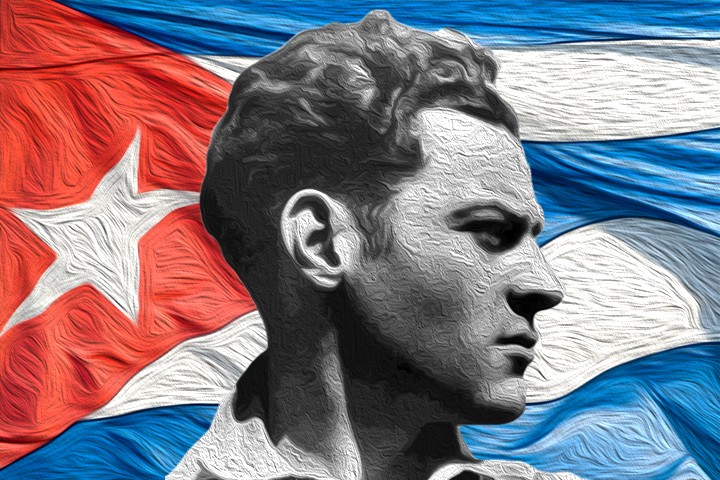 On key questions, Mella came to the same position as Lenin and Trotsky / Image: In Defence of Marxism
On key questions, Mella came to the same position as Lenin and Trotsky / Image: In Defence of Marxism
This debate heightened tensions in the PCM as Mella was accused of being a Trotskyist. There was an offensive against him, with the full pressure of the apparatus brought to bear. Blackwell explains:
“But upon the return of the delegation from Moscow after the Sixth World Congress of the Comintern, comrade Mella was not only removed from this provisional post but was also summarily removed from the Central Committee, upon the insistence of the right wing C.E.C. led by Martin (Sitirner) and Carrillo. In a former period Mella had been accused of “Trotskyism”, and only through a formal renunciation of the point of view of the Left Opposition which was probably the greatest political mistake of his party career, was he allowed to remain in the leadership.” (Russell Blackwell, “Julio A. Mella”)
Indeed, in a meeting of the Central Committee of the Mexican Communist Party, in the midst of all the pressures, Mella declared that he did not belong to the Left Opposition. Note that Blackwell uses the term “formal renunciation of the point of view of the Opposition,” which does not mean an abandonment of those ideas in reality, much less an assimilation of Stalinist ideas. In the midst of this dispute Mella was, for the second time, thrown out of a Communist Party.
Who assassinated Mella?
A month before his assassination, Mella had a bitter discussion with Vittorio Vidali inside the premises of the Communist Party. Enraged, the latter told him, “Don’t ever forget: you leave the International in one of two ways, either expelled or dead!” This man has an obscure history. During the Spanish Civil War, Andreu Nin, former militant of the Left Opposition and member of the POUM, was assassinated by the Stalinists.
Vidali is accused of being involved in this assassination as well as that of Trotsky himself. After his death, Mella’s partner, Tina Modotti, would end up in a relationship with Vittorio Vidalli. Tina was with Mella when he was assassinated, and in the police investigation itself she was accused of involvement.
The incompatibility of Stalinism and Bolshevism was such that, in order to consolidate itself in power, it had to exterminate the generation of the party that made the revolution. Between 1936 and 1938 the Moscow trials took place in which a large number of communist militants were condemned to death, accused of counterrevolutionary crimes. Some of them didn’t even make it to trial because they didn’t survive the torture rooms, prisons and concentration camps. Leon Trotsky himself would be assassinated in 1940 by a Stalinist agent in the same city in which Mella was killed. But the Cuban communist was assassinated in 1929, when this Stalinist practice of assassinations was yet to be applied.
On Mella's death, several historians, such as Adys Cupull, Froilan González and Christine Hatzky, have provided evidence that the material assassins were thugs of Machado, the Cuban president, named as José Agustín López Valiñas and Miguel Francisco Sanabria.
Russell Blackwell (Rosalio Negrete), the founder of the Left Opposition in Mexico, points out in the previously mentioned biographical article on Mella, written two years after his death, “On January 10th he was shot dead in the street by Machado’s assassins ...", recognizing the Cuban dictator as the assassin.
One of the most recent investigations, carried out by Gabriela Pulido and Laura Moreno, compared files of the Mexican police with those of the Cuban police, which also demonstrated their complicity in the murder and the protection of the killers (see El asesinato de Julio Antonio Mella: informes cruzados entre México y Cuba, Secretariat of Culture and INAH).
As Julio Cesar Guanche rightly says: “both versions [of Mella's assassination] explain Mella's life better than they explain his death: they explain everything about his revolutionary character” (“¿Por qué leer a Julio Antonio Mella?”, rebelión.org).
Was Mella a Trotskyist?
The term Trotskyist was invented to discredit those who maintained the legacy of October and grouped themselves in the Left Opposition, distorting their ideas and inverting the role played by Trotsky and Stalin in the Russian Revolution. Lenin's last struggle was to fight against the bureaucracy in an alliance with Trotsky. A school of Stalinist falsification was formed that wrote a new and distorted history. On his trip to Moscow and Brussels, Mella became aware of these debates in the International.
One can hardly question Julio Antonio Mella's Marxist credentials. Leon Trotsky is but the continuity of the ideas of authentic Marxism, and it is evident that Mella was not a Stalinist and was inspired by the ideas and struggle of Lenin and Trotsky. Mella had a head of his own that thought dialectically and with freedom. With a class perspective he came to the conclusion of the traitorous role not only of imperialism, but also of the national bourgeoisies (the “local thieves”). He was an internationalist who never abandoned the revolutionary struggle in Cuba, of which he once said, “The struggle is international, as the force that sustains the Cuban government is international: capitalist imperialism”.
Mella has national roots in his revolutionary struggle. He admired José Martí but understood the role of the working class. He knew that in the national liberation struggle the working class should play the leading role, he understood the traitorous role of the national bourgeoisie and that complete national liberation from imperialism could not happen without a struggle for socialism. In his article “The cry of the martyrs”, he declares: “There is no more fatherland. Only enemy classes”.
Did Mella belong to the Left Opposition? The Opposition was in the process of formation. Julio Antonio Mella played a role in that beginning as a route by which the ideas of the Bolshevik-Leninists were brought to Mexico and Cuba. Under pressure, Mella said he did not belong to the Opposition. That may have been a momentary mistake, though not an abandonment of ideas. The Opposition was not a ready-made entity but an organism under construction. It does not mean Mella abandoned his ideas and perspective. After his death several of his close collaborators would form the Left Opposition.
Mella was a revolutionary of integrity and that naturally led him to clash again and again with Stalinism. We have no doubt that if he had lived longer, he would have been on the side of Blackwell in Mexico or Sandalio Junco in Cuba, claiming the traditions of Bolshevism against Stalinist opportunism. Whether Mella was formally part of the Left Opposition or not has the least significance. The important thing was the ideas he defended, which in the dispute in the International coincided in its key points with those of Lenin and Trotsky, in opposition to the ideas and methods of Stalinism.
The ideas and traditions of Leon Trotsky are not alien to the Cuban and Latin American revolutionary tradition. They are an integral part of the birth of our movement and of the Communist Parties in the Americas.













